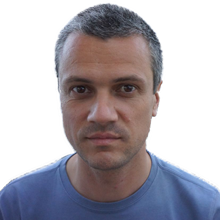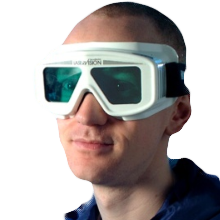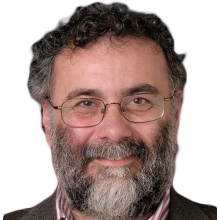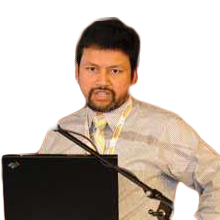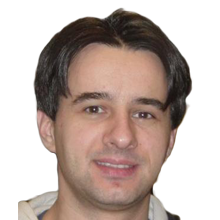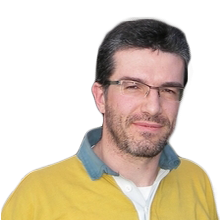MURI MIR

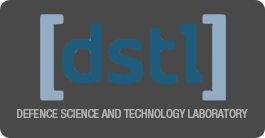
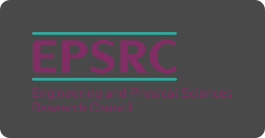





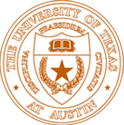



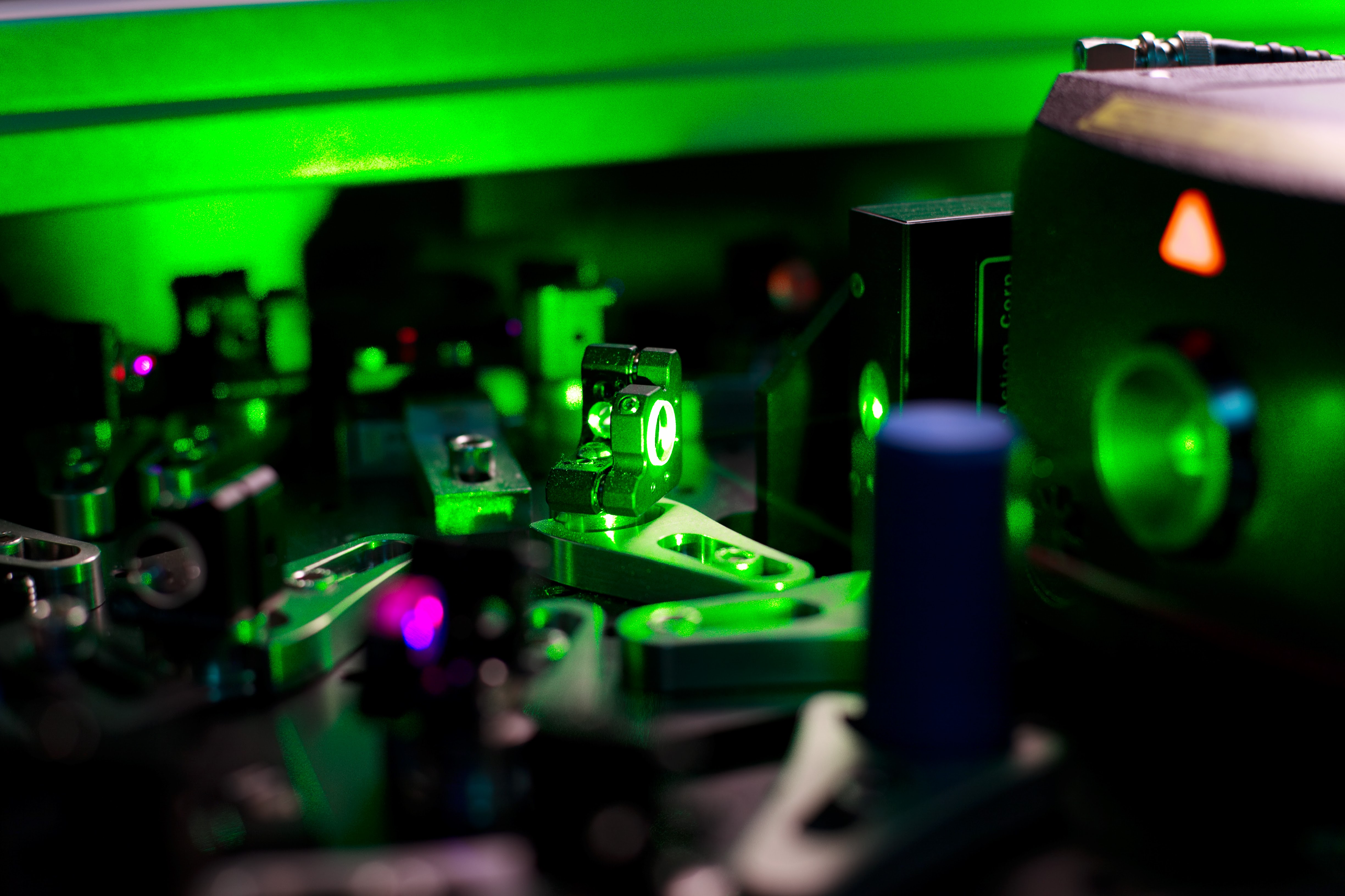
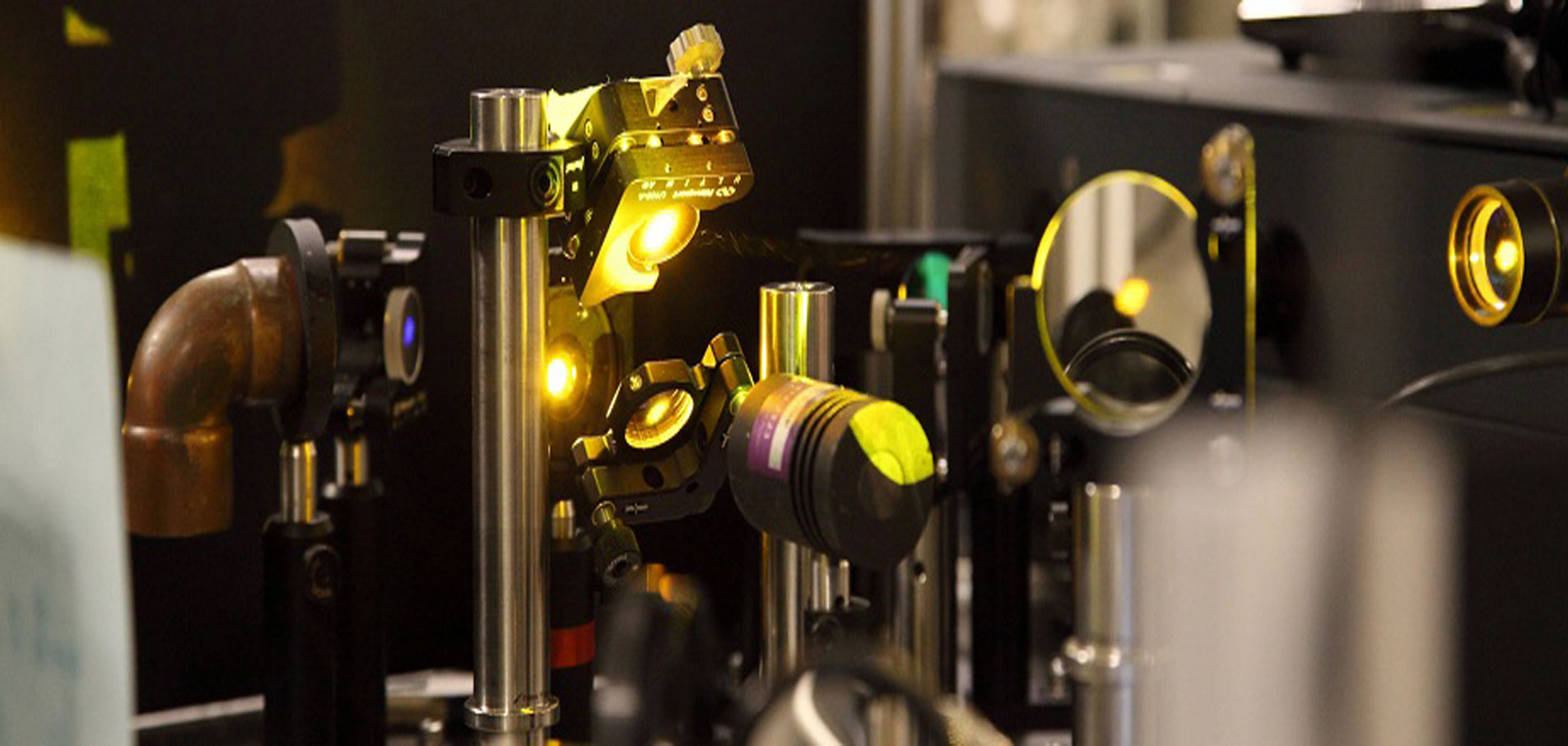
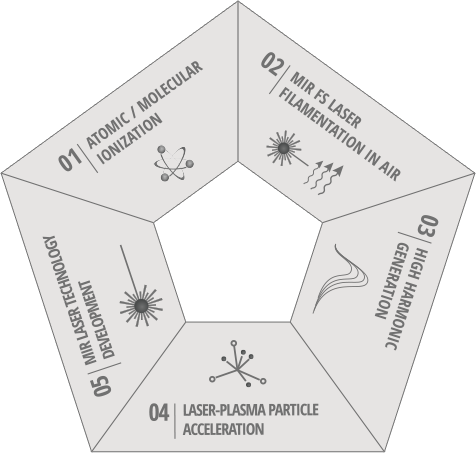

PIs: DiMauro (OSU), Marangos, Tisch (Imperial), Schafer (t) (LSU), Ivanov (t) (Imperial), 3 ¼ postdoctoral researchers, 3 graduate students
Collaborators: Agostini, Blaga, Chowdhury (OSU), Averbukh (t), Edelson-Averbukh (t), Frasinki (Imperial), Lopata (t) (LSU), (t) indicates theorists
The Thrust 1 frontier is a comprehensive investigation of the fundamental interaction of matter with intense, few-cycle ultrafast mid-infrared (MIR) radiation in systems spanning isolated atoms/molecules to nano-scale to macroscopic materials.
Thrust 1 will impact our basic knowledge of ionization in intense MIR fields. We will use advanced MIR sources, particle detectors and theoretical approaches to study both ionization dynamics and the effect that a field-driven EWP has on the production of energetic electrons & photons, multiply charged ions, and on the effective band structure of light-driven solids.
MURI Thrust 1 Synergy: The defining features of the Thrust 1 collaboration are the strong synergy and balance between theory and experiment and the combination of the most advanced analytical & numerical theoretical approaches. The interplay of Thrust 5 technology and Thrust 1 science will directly enhanced MIR metrology. Thrust 1 researchers will lay the foundation for the more complex interactions studied in filaments, HHG and particle acceleration.
The key shared facilities used by Thrust 1 are available at OSU and Imperial College and include existing kilohertz MIR sources covering 1-5 μm, state-of-the-art electron & ion analyzers and large scale computational facilities at LSU and Imperial College. The PIs also have access to the ALLS facility (Montreal) for higher intensity studies.
PIs: Polynkin (UA), DiMauro (OSU), Ivanov (t) (Imperial), Schafer (t) (LSU), Downer (UT), 4 postdoctoral researchers, 3 graduate students
Collaborators: Gaarde (t) (LSU), Couairon (t) (Palaiseau), Le`gare` (ALLS), Austin, Zair (Imperial). (t) indicates theorists
The Thrust 2 frontier is to develop a solid understanding of MIR filamentation in air, from the fundamental interplay of the microscopic and macroscopic interactions, to the advanced applications of MIR filaments to long range energy transport and remote sensing. Understanding, modeling, and characterizing the ultrafast material response at the sub-cycle level, necessitated by the extended duration of the MIR optical cycle, goes beyond the current state of the art.
Thrust 2 will impact our understanding and control of filamentary
MIR propagation in air, which is expected to allow for significantly higher and
more uniform energy transport per filament. Our studies enable applications such
as long-range guidance of electrical discharges, remote air lasing, and
atmospheric sensing through THz fingerprinting of complex molecules.
MURI Thrust 2 Synergy: Both theory and experiment will rely heavily on each other through the prediction/measurement/analysis of characteristic parameters and behaviors. Ionization models developed in Thrust 1 will be essential inputs for our propagation codes, and MIR HHG explored in Thrust 3 will be leveraged for advanced diagnostics. The advanced plasma diagnostics developed by UT will allow unprecedented filament visualization.
The key shared facilities include current and future MIR laser sources at
UA, ALLS
(Montreal), UCF and Kirtland AFB, advanced single-shot optical and plasma
diagnostics at UA and UT, and current and future state-of-the-art numerical models
of microscopic and macroscopic MIR-laser-matter interactions at LSU and
Palaiseau.


PIs: Chang (UCF), DiMauro (OSU), Marangos, Tisch, Ivanov (t) (Imperial), 1 ¾ postdoctoral researchers, 3 graduate students
Collaborators: Agostini, Blaga (OSU), Le`gare` (ALLS), Karpowicz, Krause (MPQ). (t) indicates theorist
The Thrust 3 frontier is to understand the mechanisms of HHG in atoms, large molecules, clusters and condensed matter driven by MIR lasers. New approaches for increasing the efficiency using synthesized multi-chromatic fields and novel targets will be examined. In condensed phases, HHG spectroscopy will probe the structure and dynamics of materials.
Thrust 3 will impact our knowledge of the processes involved in coherent emission of soft x-rays enabled by intense MIR and synthesized MIR laser fields. It will lead to tabletop short wavelength light sources with high photon flux. MIR pumping is ideally suited for HHG from molecules, clusters, bulk solids and liquids opening new opportunities for time resolved probing of the SF response of matter.
MURI Thrust 3 Synergy: This thrust has an essential synergy with Thrust 1 since ionization plays a critical role as the first step in HHG. There is also a natural interplay with Thrusts 5 as new MIR sources with higher power enhance the HHG source characteristics while higher reprate MIR systems will bring into reach HHG spectroscopy measurements of delicate materials.
The key shared facilities at UCF, OSU, Imperial College, MPQ and ALLS will
be used for studying HHG in gases, crystals, clusters, molecules and liquids,
which includes existing and new MIR driving lasers, and ultraviolet and x-ray
spectrometers. Large scale computational facilities at Imperial College are
available to model HHG in macroscopic media.
PIs: Downer, Shvets(t) (UT); Mangles, Najmudin, Smith (Imperial); 4 postdoctoral researchers, 4 graduate students. (t) indicates theorist
The Thrust 4 frontier will explore the first laboratory-based laser-plasma electron and ion accelerators driven by MIR laser pulses and explore their unique properties as extremely compact particle sources via a balance of experiment and simulation.
Thrust 4 will impact all accelerator-based science by producing compact sources of higher charge and better beam quality with greater tolerance to target imperfections or focusing optic damage than existing NIR schemes. The work will contribute to our knowledge of plasma-based acceleration since MIR-driven plasma structures are more amenable to experimental visualization allowing unprecedented validation of numerical models.
MURI Thrust 4 Synergy: Experiments at UT & Imperial will benchmark simulations by characterizing particle beam output and also directly visualize the laser-driven plasma structures, thus providing an unprecedented comparison between experiment and theory. Thrust 4 will make direct use of MIR laser systems developed in Thrust 5. Plasma diagnostic methods used to visualize laser wakefields will also be applied to filament structures in Thrust 2.
The key shared facilities used by Thrust 4 include multi-terawatt MIR
laser systems at IC (1.8 μm), UCF (2 μm) & BNL (10 μm), and high-performance
computation at UT and Imperial.


PIs: DiMauro (OSU), Smith (Imperial College), Chang (UCF), 1 postdoctoral researcher, and 2 graduate students
Collaborators: Blaga (OSU), Karpowicz, Krausz (MPQ), Legare (ALLS)
The Thrust 5 frontier is to exploit new MIR materials, develop novel amplifier architecture and metrology for enabling routine applications with intense MIR lasers.
Thrust 5 will impact the frontiers of Thrusts 1-4, as well as contributing to fundamental & applied science relevant to a broad range of DoD interest using intense ultrafast MIR lasers.
MURI Thrust 5 Synergy: The Thrust 5 development of MIR sources & metrology merged to Thrusts 1-4 experimental needs will by necessity enhance the collaborative efforts by colocation of research themes and exchange of students. Also an exchange program with Prof. Krausz (MPQ) will be established with OSU supported by institutional cost-sharing.
The key shared facilities enhance existing or under development sources at
OSU and
Imperial College. Additional MIR sources & expertise are available at UCF
(Chang).
Furthermore, collaborative agreements with ALLS (Légaré), MPQ (Krausz) & BNL
ATF (Pogorelsky) provide access to supplementary MIR sources.



